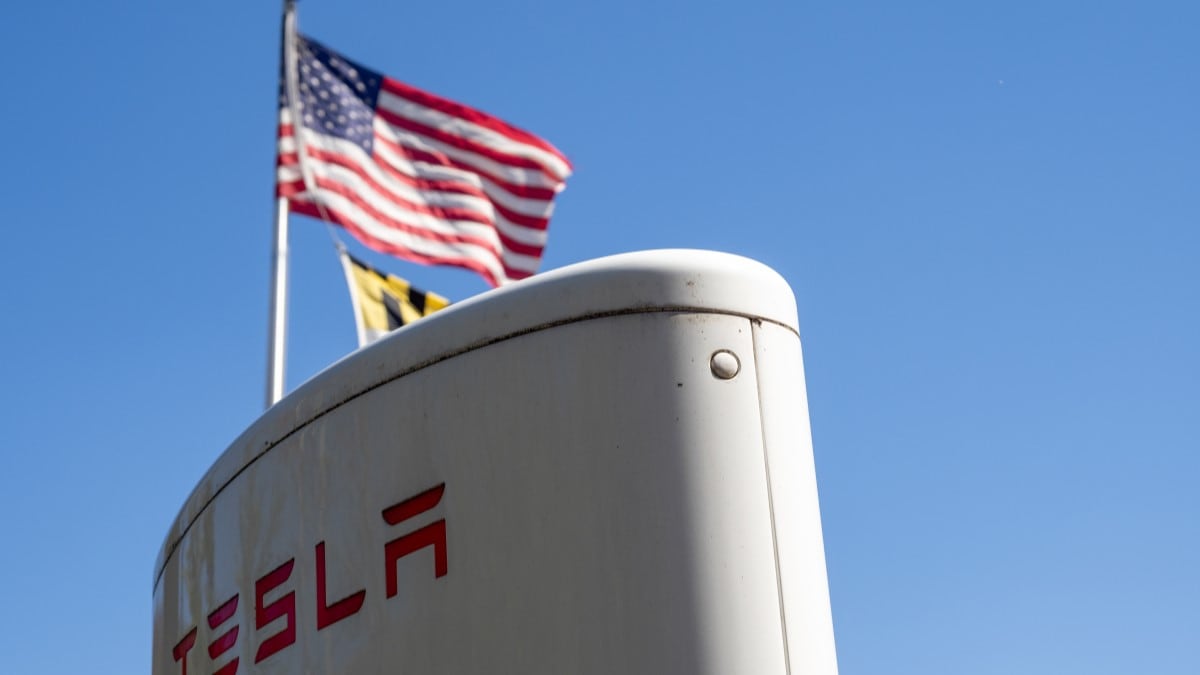
Tesla makes the most American cars, according to a new study from American University’s Kogod School of Business. However, no car is purely American-made, and the global nature of the auto industry could complicate President-Elect Trump’s plan to enact strict new tariffs on Mexico and Canada.
Every year, researchers from American University measure the percentage of parts originating in the United States or Canada in every car sold in the U.S. The result, the school’s Made in America Auto Index, is an excellent tool for exploring how interconnected the global auto industry has become.
Telsa took the top two spots last year and the top four in a list filled with ties in 2024.
American and Canadian Parts?
You may have noticed above that researchers considered parts originating in the United States — or Canada — as domestic content. Why that wrinkle?
Because even the U.S. government doesn’t differentiate between American and Canadian parts. The American Automobile Labeling Act requires manufacturers to report the percentage of American and Canadian parts used in cars but doesn’t differentiate between the two.
Kelley Blue Book spoke with the study’s lead author, American University associate professor of information technology and analytics Frank DuBois.
He explains that even when the Labeling Act was passed in 1992, the automotive industry was already a global business. “It was a different world back then, much less global than it is today,” he says. But automakers already told Congress they “couldn’t really disaggregate U.S. and Canadian parts.”
Today, the business is far more globally integrated.
Multiple Policies Influence Where Parts Come From
The act is not the only government policy that influences where automakers get their parts.
The researchers note that since the 1994 North American Free Trade Agreement (NAFTA), domestic automakers “have been more likely to look to Mexican suppliers for many of their parts and components.” DuBois called NAFTA the most significant source of change in where parts originate that he’s seen in 11 years publishing the index.
The U.S.-Canada-Mexico Agreement (USMCA) that replaced it in 2020 has encouraged automakers to “reshore” some parts production. “In particular, the requirement that the percentage of hourly labor costs exceed a certain level and that a percentage of the steel and aluminum used in vehicles must be sourced in North America to get duty-free access to the U.S. market,” the researchers say.
2022’s Inflation Reduction Act also plays a role. It requires electric car builders to use an increasing percentage of parts from the U.S. or certain trade partners to qualify for up to $7,500 in tax credits.
Related: With New Law, Automakers Moving Electric Car Production to US
An Evolving Industry Changes Content Regularly
The policies have automakers shifting production around the globe.
“VW, Toyota, Nissan, and Honda all increased their U.S. content while GM, Ford, and Stellantis witnessed drops in domestic sourcing,” the researchers write.
One model can evolve considerably. A case in point is the Lincoln Corsair – it ranked 44th in 2021. It jumped to first in 2022 as Lincoln switched to a U.S.-sourced engine. This year, it has fallen to 10th thanks to changes in content.
A Global Industry Makes Tariffs Complicated
President-Elect Trump has threatened to enact tariffs as high as 25% on goods from Canada and Mexico in an attempt to force those countries to better police U.S. borders. The global nature of the auto industry means such tariffs could raise the price of every car.
U.S.-based Wolfe Research has estimated that the move could add $3,000 to the price of the average new car, with some models costing up to $10,000 more.
Even the Most ‘American’ Car Has Many Imported Parts
DuBois notes that even the cars at the top of the index would see their prices rise under a tariff program.
“Tesla still has Chinese content in their vehicles,” he explains. The company now builds most motors and batteries in the U.S. but imports other parts from China.
Excluding motors and batteries, the second-place Model 3 Long Range “has 40% Chinese content,” he says. The Cybertruck has 20%, with Chinese parts typically found in “seats, dashboard components, and so on,” he explains.
‘Auto Executives Like to See Stability’
“Automotive executives like to see stability in trade relationships with our major trade partners,” DuBois notes. “We’re going to see a period of real instability,” with Trump’s tariff threats and possible retaliation.
If the final tariff policy requires them to track American and Canadian parts separately, “It’s going to be a data problem. A nightmare, I might say.”
Costly tariffs could punish some companies worse than others, he notes. “What happens to a company like Polestar, which gets all its models from China?” Volvo, he explains, is also heavily dependent on China, while troubled Nissan imports more parts and vehicles from Mexico than many rivals.
The 25 Cars in the Top 10:
Two trim levels of the same car can differ in domestic content, as manufacturers might use more imported parts to build some trim levels.

